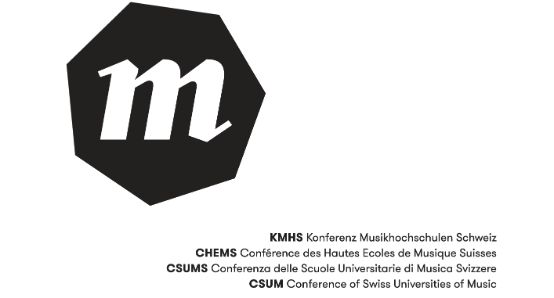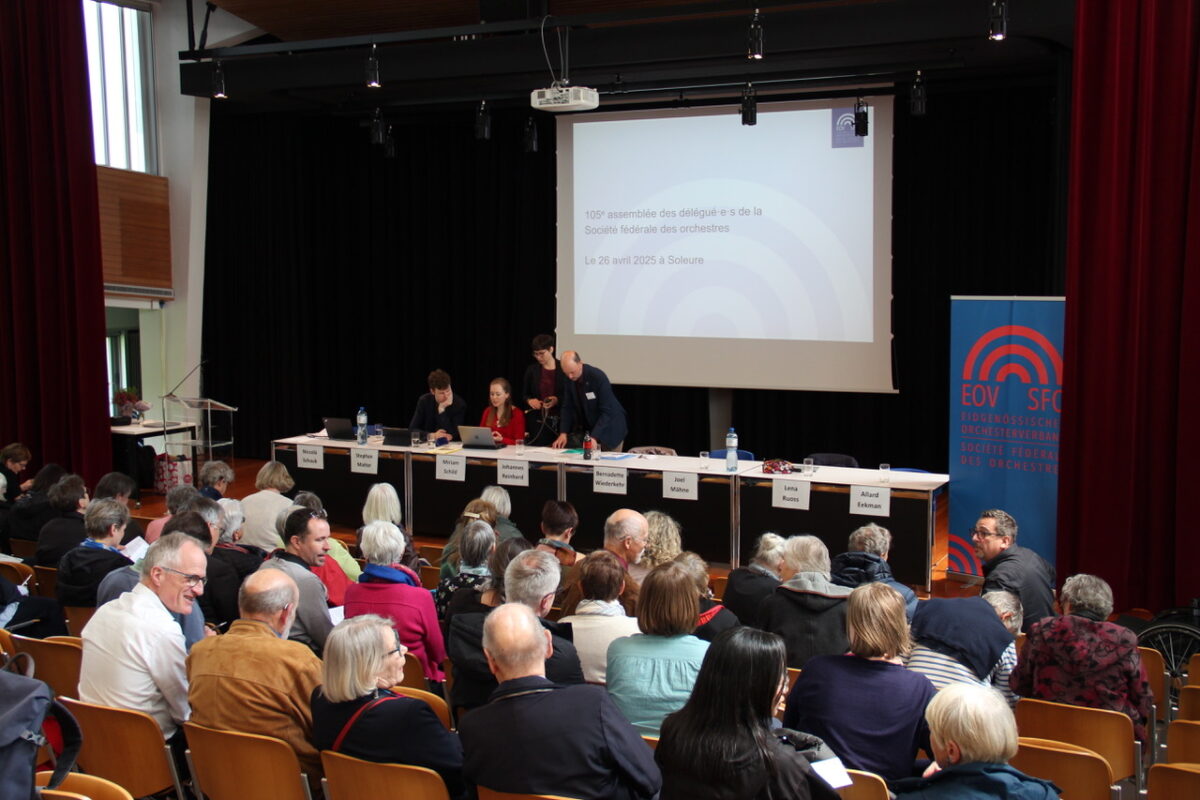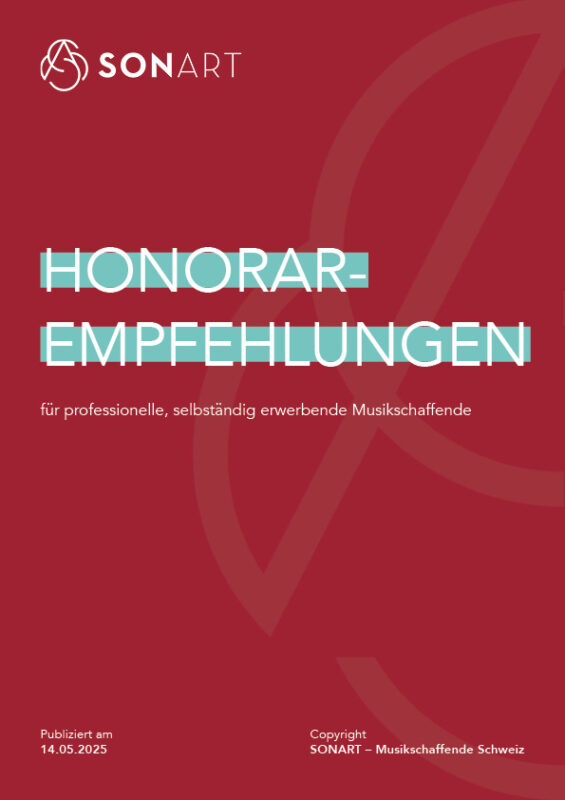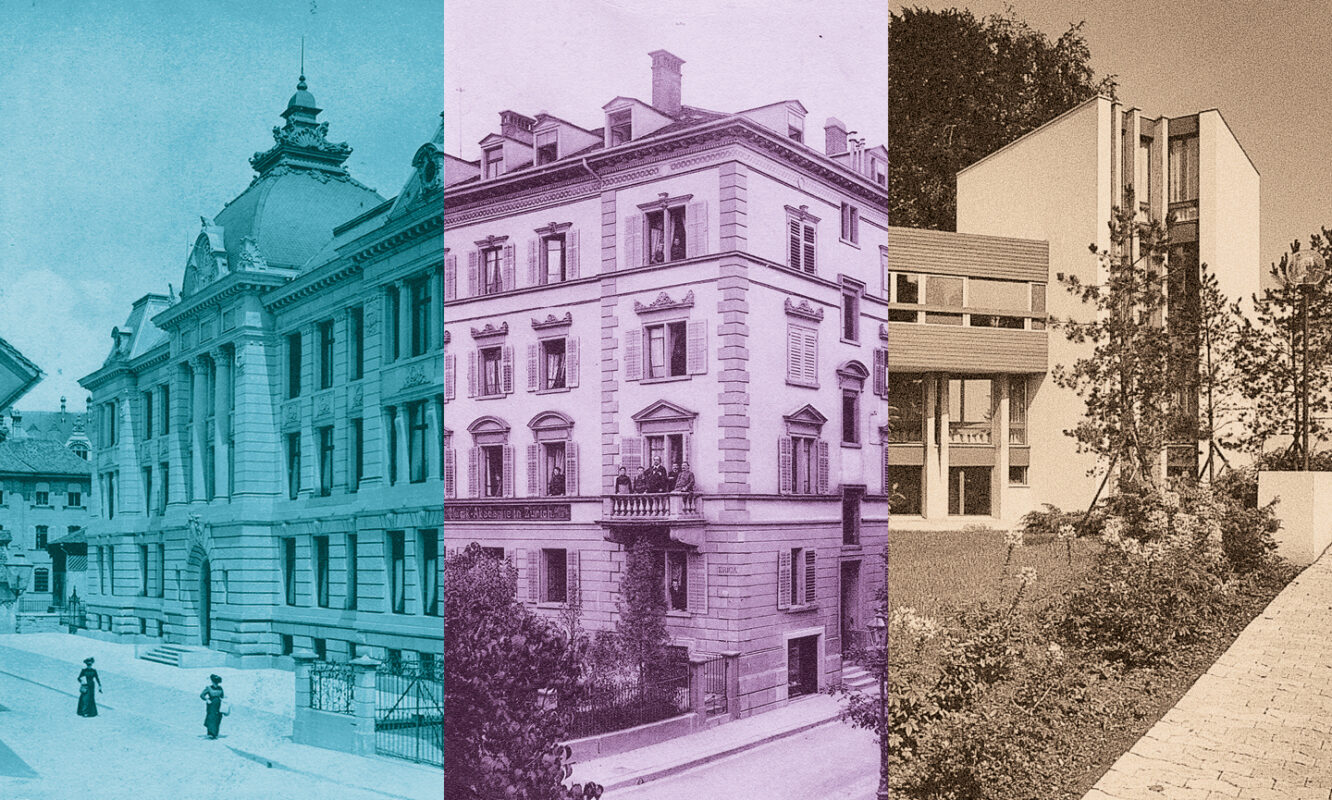L'enseignement du jazz dans les HEM suisses
Le jazz fait partie des multiples facettes de la scène musicale suisse. Un aperçu de l'histoire et du développement des filières jazz aux Hautes Écoles de Musique suisse et un rapport sur les archives de jazz suisses swissjazzorama.

Thomas Dobler - In order to have an explanation of the teaching of jazz, it is essential to try to define and decipher this music that we are passionate about. Many attempts have been made in this direction over the last few decades. For some, jazz is "the" music of the 20th century. For others, jazz is considered to be the music of the Afro-Americans. Others still say that jazz is "improvised music". For some, jazz means rebellion, resistance or, in other words, the fight for freedom. For others, it is a music that consists mainly of "groove". One could establish a long list of clichés, sometimes almost caricatures. At the end of the record, one finds oneself in a veritable jungle of style in all cases.
Heureusement, le jazz se démontre malin. It doesn't let itself be cataloged. It has evolved and continues to evolve. It has never been possible to pigeonhole it into dogmatic and inflexible categories. Even the disputes between traditionalists and modernists in the 50s and 60s have been lost in the void. Nevertheless, the question " qu'est-ce que le jazz ? " continues to be the subject of discussions, particularly among musicians and within professional institutions. The challenge for these latter is indeed enormous.
Jazz has always been characterized by a mélange of influences and styles. In a way, it is the artistic fruit of cultural exchanges and, consequently, the expression of freedom. Le jazz is nourished by the Afro-American tradition, but also by the most current trends, including electronic music. It is also nourished by all kinds of classic music, including baroque, impressionistic and expressive music. In addition, jazz is strongly inspired by Afro-Cuban music, Brazilian music, the music of East Africa, India and the music of the whole world. The exchange is crucial. It therefore seems obvious that the musician jazz must demonstrate a great openness of spirit. He must at the same time have a great understanding of tradition and at the same time always turn towards the unknown.
Miles Davis said that jazz is not just music. C'est un état d'esprit ! He was probably right. Mais comment se positionner en tant que Haute École de Musique (HEM) ? One cannot teach a state of mind. But we can teach music in all its diversity. Ceci so that the students can develop their personality and their own personalities through rich experiences.
Until the 1960s, musicians who wanted to learn to play jazz in Switzerland did so in a self-taught way. The few training programs created during the inter-deux-guerres at the Musikakademie de Zurich (1935), the Conservatoire de Bâle (1940) and the Lycée musical de Genève (1941) did not establish themselves in a sustainable way. Books on jazz were rare and discs were expensive. One therefore learned by playing with experienced colleagues, by listening to and copying the few recordings available. In this context, many amateur musicians were looking for advice and professional initiation. In response to this demand, jazz courses were set up between 1958 and 1961 in Zurich, Bâle and Berne. In 1967, the Swiss Jazz School opened its doors in Berne and offered a training course based on the program of the Berklee College of Music in Boston. In terms of teaching, the United States was making considerable headway at that time, despite the great popularity of jazz in all regions of Europe. In French-speaking Switzerland, between 1979 and 1982, three classical conservatoires, the Conservatoire de Musique de Fribourg, the Conservatoire Populaire de Musique (CPM, Geneva) and the Conservatoire de Montreux opened jazz sections. The following years saw the creation of the École de jazz et de Musique Actuelle (EJMA) in three French-speaking cities: Martigny in 1983, Lausanne in 1984 and Sion in 1986.
The field of jazz in Switzerland reached a veritable peak in the 2000s, when the music schools of Lausanne, Berne, Lucerne and Zurich integrated jazz departments as part of the reform of the Bologna Process. A few years later, the HEMs in Zurich and Lausanne also opened departments of contemporary music. In the meantime, pre-professional branches are being set up throughout Switzerland. The DKSJ (Directors' Conference of Swiss Jazz Schools) brings together the cinq jazz departments of the HEM suisses as well as the majority of the "Pre-Colleges" and other jazz schools in the four corners of the country. This institution is a particularly prestigious place of exchange and regularly realizes joint projects. Globally, one can say that the national and international reputation is developing and becoming more and more important. Thus, in the space of a quarter of a century, Switzerland has gone from an amateur and informal apprenticeship to professional training at tertiary level, i.e. to structured courses of study based on Bachelor's and Master's degrees recognized at federal level.
At the same time, the field of jazz has evolved enormously. From an artistic point of view, but also from a musical point of view. The digital revolution has fundamentally changed our profession as well as the job market. All the jazz departments of HEM Suisse are following this development, particularly in the field of musical information technology as well as in the field of studio and recording. The skills envisaged and required for the "musician of today" tend to multiply very rapidly. It is necessary to be both a generalist and a specialist. In this context, it is not always easy to put in place a coherent study plan that responds to all needs. All the more reason for the HEMs to anticipate certain changes. This is the reason why the majority of schools have implemented the possibilities of individualizing the course in order to allow for a maximum of diversified profiles. However, with this multitude of alternatives, it is not always obvious for a young musician to find his or her artistic identity. Support from teachers is very important, but it can never replace practical experience. The sometimes rude competition across the entire music sector at an international level does not facilitate this endeavor.
It is essential to have an entrepreneurial spirit with a keen sense for innovation. The very dynamic energy that can currently be found in the jazz departments of HEM Suisse favors the development of this "new" model of musician. All this positive energy deserves to be recognized. In this sense, we hope for a rapid end to the pandemic and a brilliant return to culture!
Thomas Dobler
... is adjoint de direction département jazz, responsable de la filière Bachelor jazz et responsable de la filière Masteren Interprétation option Performer-Composer à l'HEMU (Haute École de Musique Vaud Valais Fribourg).
Matthias von Orelli - The Swiss Jazz Archive looks back on an exciting history. Founded in 1989 as the Pro Jazz Schweiz association, its aim was to archive the existing image and sound material on the one hand and to collect information from the past and present of the Swiss jazz scene on the other. In 1996, the archive was initially handed over to the Basel Jazz School before moving to Uster in 2000. In the same year, the archive was renamed swissJazzorama. In the years that followed, the archive holdings continued to grow, while at the same time the collection gained in importance, as it preserves important cultural-historical works from the Swiss jazz landscape, which are prepared both for academic purposes and for the public. This development reflects the purpose of the association: the systematic collection and processing of representative information and documents on the history and present of jazz in general and in Switzerland in particular.
There are plans to merge the archive with the ZHdK in the near future, which would make swissJazzorama part of the jazz department at the Zurich University of Music. This transition would have the advantage that the archive could benefit from the various disciplines of the ZHdK, i.e. not only from the Department of Music, but also from the Department of Design, for example. This step would also strengthen the important, meaningful and contemporary collaboration between academia and the archive. In addition, this collaboration would provide an opportunity for students to get involved as helpers.
To this day, swissjazzorama is considered the central archive and information point for jazz in Switzerland1. The website enables access to the enormously extensive online archive, the holdings include visual and audio media, books, posters, photographs, press articles and instruments. Around 3,500 books on jazz (biographies, reference works, discographies, thematic and musicological works) are currently available, the photo archive contains historical photos and images of musicians and jazz personalities who have shaped or continue to shape the Swiss jazz scene, and the sheet music archive contains hand sketches and original compositions by musicians from the Swiss jazz scene, as well as sheet music of "standards" with marginal notes on arrangements or harmony modulations. Around 4200 posters graphically illuminate the Swiss jazz scene from the beginning of the 20th century to the present day.
The institution is thus positioning itself as an important contact point for students, lecturers, musicologists and journalists, as well as for jazz fans of all styles.
Grade
1 The archive of Niklaus Troxler, which is managed by the Lucerne School of Music, is also significant:
> www.willisaujazzarchive.ch








